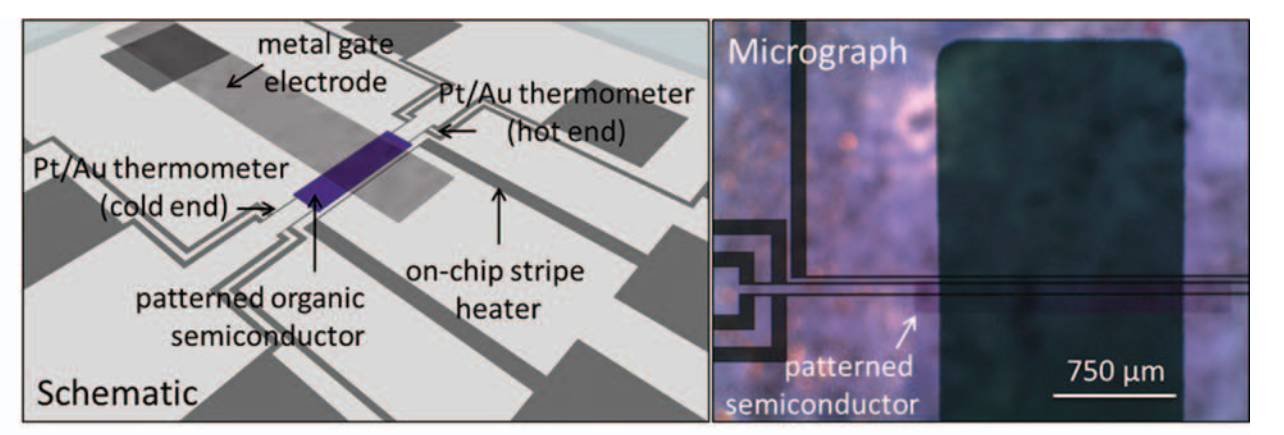Across the global energy economy, only about one-third of primary energy is converted into useful energy services, while the other two-thirds are rejected in the various industrial, transportation, residential energy conversion and electricity generation processes. Given the urgent need for transitioning to a carbon-free energy supply in order to mitigate the dangerous consequences of climate change, we cannot tolerate a waste of energy on this scale. Most of the rejected energy is wasted as heat, with over 60% as low-grade heat with temperatures below 230°C. For heat emitted at higher temperatures and from a small area, there are efficient recovery schemes based on heat engines, such as Rankine cycles. However, for low-grade heat generated over large areas, for example, along the surface of chemical process pipes or in solar cells due to inefficient photovoltaic conversion, there are currently no efficient and cost-effective waste heat recovery technologies. Thermoelectric waste-heat-to-electricity conversion could offer a potential solution. There is an already growing industrial interest in thermoelectric converters for energy harvesting and powering of autonomous microelectronic sensors for the Internet of Things (IoT). Nevertheless, for grid-scale applications, the performance of thermoelectric materials is currently insufficient.
Figure: Device architecture for accurate measurement of thermoelectric transport coefficients.
A good thermoelectric material should be made from non-toxic, earth-abundant elements, have a high Seebeck coefficient (S), a high electrical conductivity, but a low thermal conductivity, in order to maximise the relevant energy efficiency-determining figure of merit (ZT). ZT values > 2 - 3 are likely to be needed to make grid-scale waste heat harvesting feasible and cost-effective. There are no known fundamental limits to increasing ZT but improving thermoelectric performance is a very challenging task in conventional metals and semiconductors due to the physics of transport making it difficult to simultaneously optimise the relevant transport coefficients. The Wiedemann-Franz law implies that the electronic contribution to the thermal conductivity cannot be kept low when the electrical conductivity increases.
Our research is focused on the discovery of novel thermoelectric materials that could enable grid-scale thermoelectric energy harvesting. We are particularly interested in organic and organic-inorganic hybrid semiconductors because their soft intermolecular bonding allows for ultra-low thermal conductivities. Their unique charge transport physics and strong electron-phonon coupling could make it possible to overcome some of the above-mentioned challenges of optimising the thermoelectric figure of merit.
The key to advancing the thermoelectric properties of these molecular materials is a detailed understanding of charge and heat transport on the nanoscale. For this, we are developing experimental techniques that allow the mapping of thermoelectric properties with nanometer spatial resolution.
References:
- Venkateshvaran, D. et al. Approaching disorder-free transport in high-mobility conjugated polymers. Nature 515, 384-388 (2014).
- Kang, K. et al. 2D coherent charge transport in highly ordered conducting polymers doped by solid state diffusion. Nature Materials 15, 896-902 (2016).
- Statz, M. et al. On the manifestation of electron-electron interactions in the thermoelectric response of semicrystalline conjugated polymers with low energetic disorder. Commun. Phys. 1, 10 (2018).
- Kang, K. et al. Investigation of the thermoelectric response in conducting polymers doped by solid-state diffusion. Mater. Today Phys. 8, 112-122 (2019).
- Statz, M. et al. Charge and thermoelectric transport in polymer-sorted semiconducting single-walled carbon nanotube networks. ACS Nano 14, 15552-15565 (2020).
- Chen, C. et al. Observation of weak counterion size dependence of thermoelectric transport in ion exchange doped conducting polymers across a wide range of conductivities. Advanced Energy Materials 13, 2202797 (2023).
- Wang, S. et al. Enhancing the thermoelectric properties of conjugated polymers by suppressing dopant‐induced disorder. Advanced Materials 36, 2314062 (2024).
- Tjhe, D. H. L. et al. Non-equilibrium transport in polymer mixed ionic–electronic conductors at ultrahigh charge densities. Nature Materials 23, 1712-1719 (2024).
- Ma, Y. et al. Observation of anomalously large Nernst effects in conducting polymers. Nature Communications 16, 1435 (2025).


